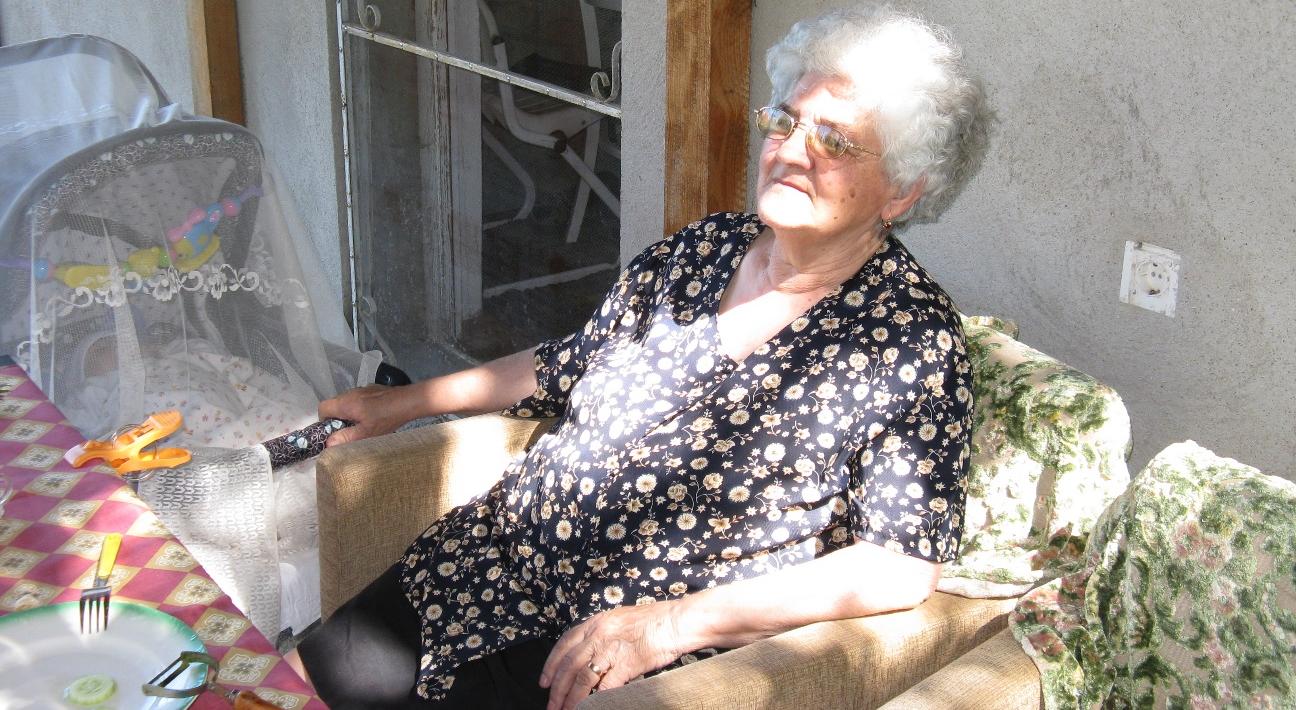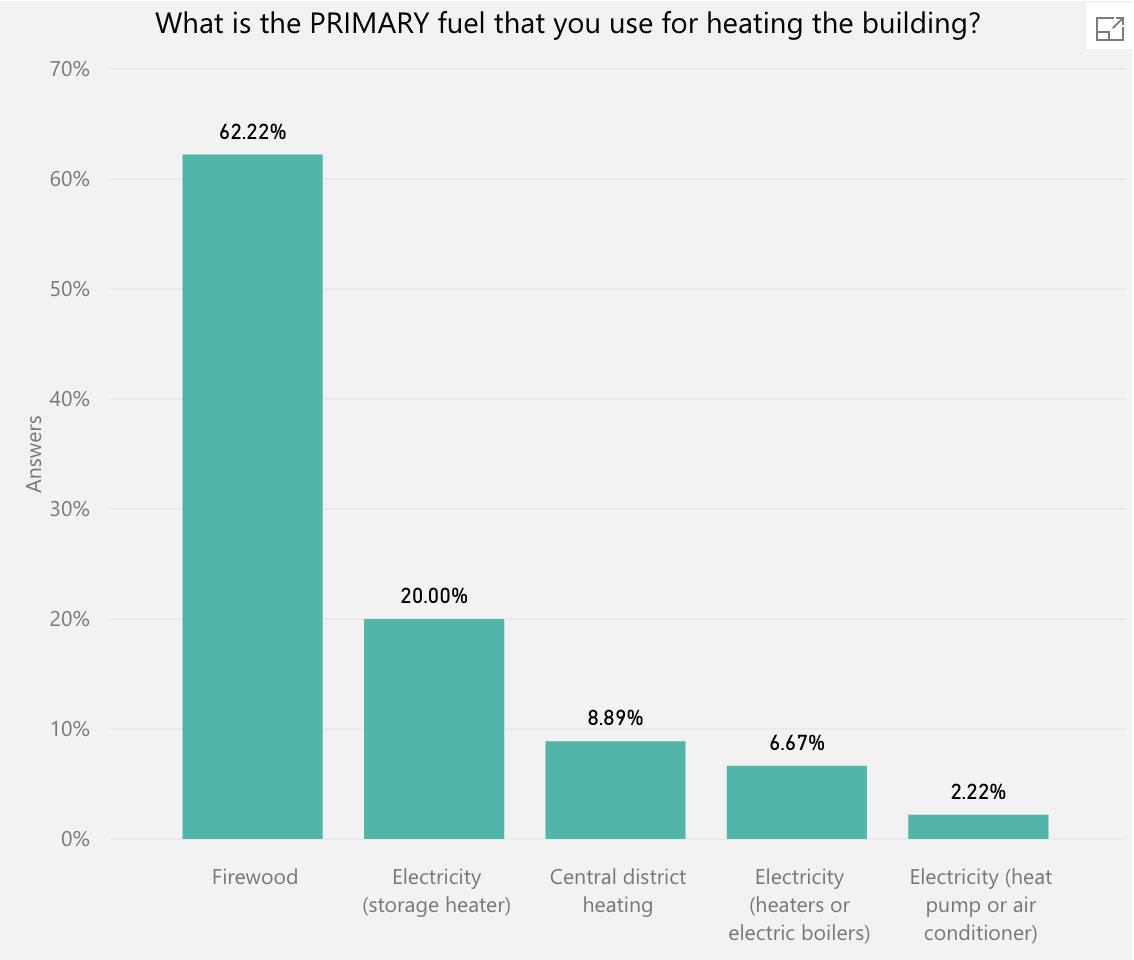Older women suffer greater impact of climate change
Human activities, especially the use of fossil fuels, are the main reasons for the increase of the global temperature and for the increasing rainfall
- {{"article.by"|translate}} Elizabeta Djambaska, Ph.D.
- {{"article.posted"|translate}} 01-06-2020
Older women suffer greater impact of climate change
Human activities, especially the use of fossil fuels, are the main reasons for the increase of the global temperature and for the increasing rainfall
Mostly affected are the elderly, especially women who face the challenge of providing a proper home heating, considering the high heating costs, especially because most of their monthly income is spent on energy
The highest percentage of these, 62.22% use firewood as the primary energy source for heating the household.
Method of household heating for women 65+ who live alone

Source: https://www.skopjesezagreva.mk/otvoreni-podatoci-site/
Of those, 28.89% heat the entire home, 26.67% heat up to ¼ of the home and more than half of these households heat the home 12 hours a day. The worrying fact is that those who use firewood as a way of heating the home use old wood stoves and in 85.71% of these households, have wood stoves that are older than 20 years.
Thus, women have long been exposed to the negative effects of burning firewood that has a long-term impact on their health.
According to the traditional family relations, it is assumed that they often need to support and assist in raising their grandchildren. Active participation in care and upbringing of the youngest is noble, but it also brings too many obligations to the "grannies". In this way they neglect themselves and their needs. In situations like this, very often in their homes there are small children. On the other hand, these women are also helped and supported by their children. The health and well-being of women older than 65 years, as a vulnerable group, should be one of the priority groups in the social system.
The insufficient awareness of these households about the harmfulness of using firewood in their homes as a way of heating is one of the factors why these households still use such a heating system at home. But, much more important factor is the lack of funds or economic poverty of these households, so they do not have an option to choose another way of heating the home.
Increased awareness and knowledge about the harmful consequences on their health and physical and psychological development, as well as on the health of children who occasionally stay with them at home, and an appropriate financial relief program, will enable them to change the heating system in their homes.
The women from this group surveyed listed the most important criteria for selection of heating, which are as follows: 46.7% said that it is monthly cost, 26.7% possibility for automatic operation of the heating system, 13.3% investment cost and 13.3% specify other criteria. It is especially interesting that if they disregard the installation cost for the equipment and the monthly expense, most of these households would choose a boiler on wood (42.2%). However, 26.7% do not know what they would choose.
Criteria for choosing the heating method for women 65+ who live alone

Source: https://www.skopjesezagreva.mk/otvoreni-podatoci-site/
Out of the surveyed housewives, 91.3% use firewood for cooking, and 8.7% use LPG for preparing meals.
Do women 65+ who live alone use only electricity for cooking at home

Source: https://www.skopjesezagreva.mk/otvoreni-podatoci-site/
The focus on safety measures and recommendations that would reduce the use of firewood as a source of heat, would be a major step towards reducing the negative impacts of climate change.
How to change?
The changes for this group will arise from the implementation of the activities and measures from STURGES and Skopje breathes which were prepared in 2017.
Women aged 65 years and over, living alone, defined as vulnerable and financially powerless, should be included as a priority group in the application of the proposed measures. Pollution mitigation measures for the City of Skopje should provide professional and financial assistance to these households to make it easier for them to change the heating method or offer the possibility to replace firewood stoves with newer and more energy efficient ones.
* changing the heating method, replacing the fossil fuels (primarily firewood) with alternative environmentally friendly sources of energy,
* completely abandoning coal as a source of heating energy for homes is foreseen;
* possibility for connection to the central heating system.
Some measures are related to improving the insulation of houses and buildings. Also, introducing appropriate solutions for using solar energy is a way of providing hot sanitary water in households.
* Change and reconstruction of thermally inefficient facades and thermally uninsulated roofs and applying appropriate solutions for the utilization of solar energy.
The best scenario is the proposed measures to cover all households in this group, regardless of the municipality they belong to.
In this way, the living conditions of these households will be improved and the exposure to climate change will be reduced.
-
Корисни линкови
26-01-2021 -
Справување со климатските промени и загадувањето на воздухот во градот Скопје
29-04-2018 -
Финансирање во климата
28-01-2022 -
Микронаративи
08-06-2022
{{"article.lastestPosts"|translate}}
-
Нови финансирања за унапредување на природата и биолошката разновидност на Зелената агенда за Западен Балкан
11-03-2025 -
Започна проектот за развој на 1-от и 2-от двогодишен извештај за транспарентност и 5-от национален извештај за климатски промени на С.Македонија
04-03-2025 -
Земјоделски форум за климатски промени: Се изнаоѓаат решенија за поголема климатска отпроност на заемјоделието
02-12-2024 -
Заврши COP29, центарален фокус на финасирањето за климата
02-12-2024





 Мод за знаковен јазик
Мод за знаковен јазик Говорен асистент
Говорен асистент Означи линкови
Означи линкови

 Зголеми маус
Зголеми маус